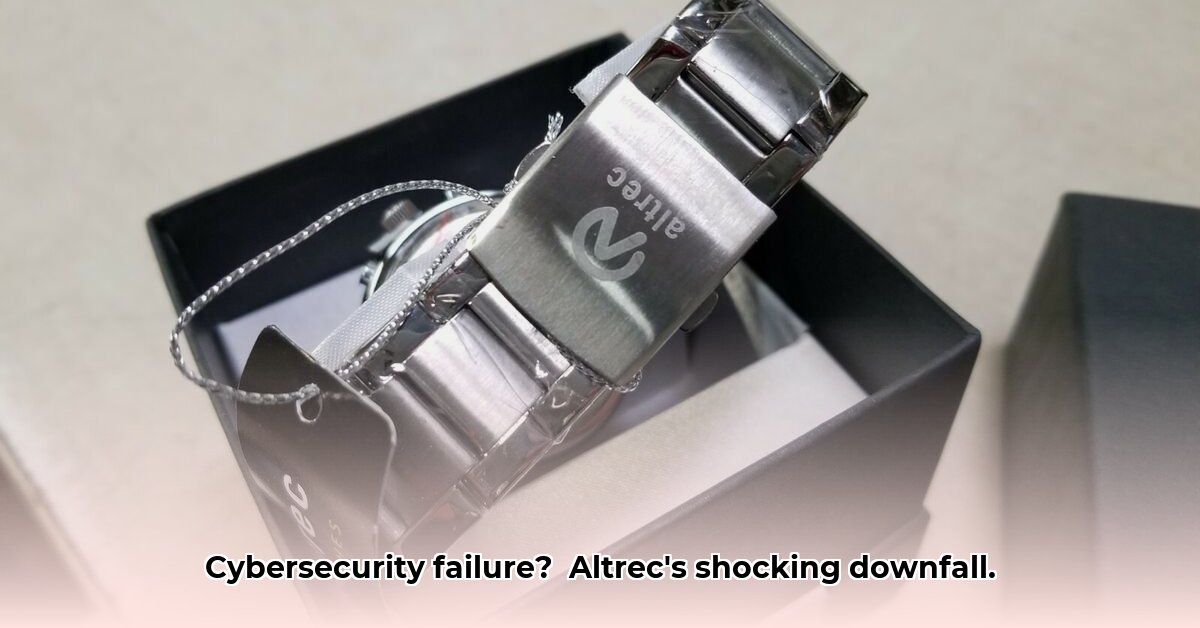
The Fall of an E-commerce Giant
Altrec, a once-prominent online retailer of outdoor gear, experienced a spectacular downfall in 2011. Boasting $59 million in revenue by that year, the Oregon-based company's collapse serves as a cautionary tale, highlighting the interconnectedness of cybersecurity breaches, financial mismanagement, and operational vulnerabilities in the e-commerce landscape. This case study analyzes Altrec's demise, revealing critical lessons for businesses aiming to avoid a similar fate.
Case Study Analysis: Unraveling Altrec's Downfall
The narrative of Altrec's failure isn't a simple story of one single event, but rather a confluence of factors that, when combined, proved insurmountable. The most immediate and impactful event was a significant data breach in 2011, exposing sensitive customer information. The precise financial impact is debated, but the subsequent loss of customer trust irrevocably damaged the company's reputation and eroded sales. This breach, however, wasn't an isolated incident but rather a symptom of deeper systemic issues.
The Cybersecurity Crisis
The extent of Altrec's cybersecurity investment relative to its size and growth is a point of contention among cybersecurity experts. Some suggest inadequate infrastructure, while others point to deficiencies in employee training or the lack of a robust incident response plan. Regardless, the consequences were disastrous. The breach highlighted the catastrophic potential of even seemingly minor security oversights in a hyper-connected e-commerce environment. Did Altrec underestimate the risk, focusing on growth without parallel investment in security? The answer, unfortunately, reveals itself in their collapse.
Financial Instability and Management Decisions
The data breach wasn't Altrec's only challenge. Financial instability played a crucial role. A delay in securing a vital bank loan, intended for inventory management, severely impacted operations. This shortage of crucial products during peak seasons further exacerbated customer dissatisfaction, fueling the downward spiral. The financial precariousness may be attributed to several factors: rapid expansion outpacing the establishment of a strong financial foundation, a lack of strategic planning and diversification, overestimation of growth potential leading to risky financial decisions, or a combination thereof.
Operational Vulnerabilities
Beyond cybersecurity and finances, operational vulnerabilities also contributed to Altrec's demise. Insufficient inventory management practices, a common pitfall in the e-commerce world, left the company unable to meet the demands of peak seasons. This resulted in stockouts, customer frustration, and further damage to reputation. This situation illuminates the importance of efficient inventory control and demand forecasting as crucial components of e-commerce success. Were management decisions driven by growth ambitions, overriding more cautious operational strategies? The consequences are plain to see.
Actionable Intelligence: Mitigating Future Risks
Altrec's collapse provides invaluable insights for businesses seeking to avoid similar pitfalls. Protecting against these vulnerabilities requires a proactive, multi-faceted approach:
- Prioritize Cybersecurity: Invest in robust security infrastructure, regular audits, employee training, and a comprehensive incident response plan. This is not an expense; it's an investment in long-term stability.
- Diversify Finances and Operations: Avoid over-reliance on single funding sources or suppliers. Cultivate multiple revenue streams and build a more resilient operational structure.
- Master Inventory Management: Invest in forecasting tools and inventory management systems to optimize stock levels and avoid costly stockouts.
- Develop a Crisis Communication Strategy: Prepare for unforeseen events with a plan for transparent and effective communication with customers, partners, and stakeholders.
These steps aren't merely suggestions; they are essential components of a successful and sustainable e-commerce business model.
Risk Assessment Matrix
| Risk Category | Likelihood (High/Medium/Low) | Impact (Catastrophic/High/Medium/Low) | Mitigation Strategy |
|---|---|---|---|
| Cybersecurity Breach | High | Catastrophic | Proactive security measures, incident response plan, robust employee training |
| Inventory Shortages | Medium | High | Efficient inventory management, diverse suppliers, robust demand forecasting |
| Financial Instability | Medium | High | Diversified funding, conservative financial modeling, contingency planning |
| Reputational Damage | Medium | Very High | Proactive communication, strong customer service, swift issue resolution |
| Competitive Pressure | High | Medium | Continuous innovation, thorough market research, strategic partnerships |
Conclusion: Learning from Altrec's Demise
The collapse of Altrec underpins the significance of proactive cybersecurity measures, prudent financial management, and robust operational strategies. It's a powerful reminder that rapid growth must be balanced with the development of a resilient and adaptable business model. Ignoring these factors, as Altrec tragically demonstrated, can lead to devastating consequences. The outdoor gear industry, and indeed the wider e-commerce sector, must learn from Altrec's mistakes to prevent similar failures. The cost of inaction far outweighs the investment in comprehensive risk management.